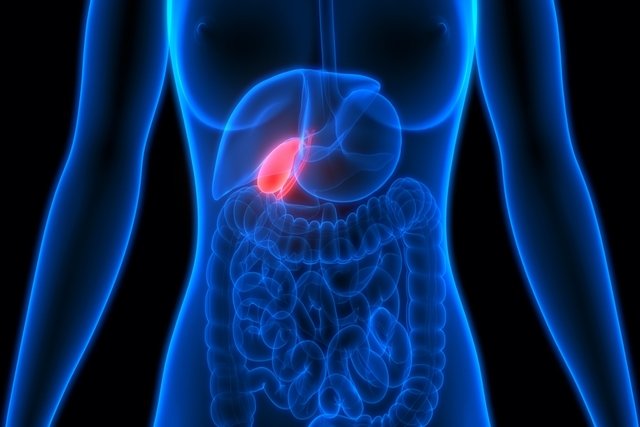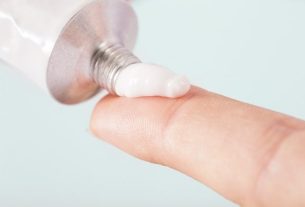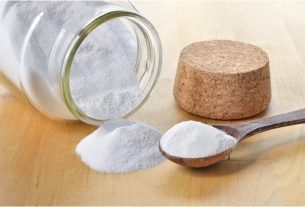The gallbladder is a pear-shaped organ, which is part of the digestive system, located under the liver, in the upper right part of the abdomen, and its main function is to concentrate, store and excrete bile, which is made up of cholesterol, salt bile, bile pigments, immunoglobulins and water.
Some problems can interfere with the functioning of the gallbladder, such as gallstones or the presence of polyps, and cause symptoms such as intense pain on the right side of the belly, fever or yellowish skin.
Therefore, in the presence of these symptoms, it is recommended to consult a general practitioner or gastroenterologist, so that the diagnosis can be made and the most appropriate treatment can be initiated, which can be done with changes in diet, use of medicines or surgery, for example.

Main functions
The main functions of the gallbladder are:
- Store and concentrate bile produced by the liver;
- Empty and replenish bile stores in response to the hormone cholecystokinin, which is responsible for stimulating the release of bile;
- Produce sodium bicarbonatewhich is part of bile juice and helps neutralize stomach acids;
- Produce mucinswhich protect gallbladder cells from bile;
- Release bile in the small intestine to participate in the digestion of fats and facilitate the absorption of vitamins from food.
Furthermore, the amount of bile released depends on the volume of fat to be digested and the amount of cholecystokinin produced by the intestine.
Where is the gallbladder
The gallbladder is in the upper right part of the abdomen, located beneath the right lobe of the liver, shaped like a sac or a pear, where the bile produced by the liver is stored.
The gallbladder has a size of about 7 to 10 cm and a greenish color due to the components present in bile, such as water, pigments, bile and inorganic salts, sodium bicarbonate, cholesterol and fats, and has the capacity to store up to 50 mL of bile.
Symptoms of gallbladder problems
The main symptoms of gallbladder problems are:
- Pain on the right side of the belly, intense and that starts quickly;
- Stomach pain that radiates to the ribs, back or rest of the abdomen;
- General feeling of discomfort;
- Loss of appetite;
- Swelling in the belly;
- Excess gases;
- Nausea;
- Vomiting;
- Sweats;
- Yellowish skin;
- Fever.
Symptoms of gallbladder problems usually appear after consuming a very fatty meal, and it is important that a gastroenterologist or general practitioner is consulted so that it is possible to check whether there is any change in the gallbladder, which can be done through imaging tests, such as abdominal ultrasound or computed tomography, for example. This way, it is possible to confirm the diagnosis, identify the cause and initiate the most appropriate treatment. Check out the symptoms of an inflamed gallbladder and how to treat it.
Main gallbladder problems
The main problems that can affect the gallbladder include:
1. Gallstones
Gallstones, known scientifically as cholelithiasis, occur due to the crystallization of bile inside the gallbladder, forming small stones that can obstruct the flow of bile into the intestine, causing pain. Furthermore, gallstones can also form when bile is retained in the gallbladder for a long period of time.
The formation of gallstones occurs more frequently in women, people who are obese or overweight, diabetics, who use medications such as oral contraceptives, or due to excessive consumption of fatty foods. Find out if you might have gallstones by taking the online test.
What to do: the treatment of gallstones must be indicated by the gastroenterologist and may vary depending on the symptoms, the size of the stones and other factors such as age, weight or other associated diseases, and a low-fat diet, use of medicines, waves of shock or surgery, for example.
Watch the following video and find out what to eat to help treat gallstones:
2. Lazy gallbladder
The lazy gallbladder, as it is popularly known, is a change in the functioning of the gallbladder, which stops releasing bile in sufficient quantity to digest the fats in food, causing symptoms such as a feeling of a full stomach even after having eaten little, bloating, excess gas , heartburn and malaise.
Gallbladder malfunction can be caused by the deposit of crystals in the bile, hormonal problems, and also by contraction of the gallbladder or the sphincter of Oddi, which controls the flow of bile into the intestine.
What to do: Treatment for lazy gallbladder must be indicated by a gastroenterologist and may vary according to the symptoms and the underlying cause, but is generally started by taking care of your diet to reduce the amount of fat. Check out more details on the treatment for lazy gallbladder.
3. Polyps in vesicle
The gallbladder polyp is characterized by an abnormal growth of tissue on the inner part of the gallbladder wall. In most cases, it is asymptomatic and benign and is discovered during abdominal ultrasound examinations or during the treatment of another gallbladder problem.
However, in some cases symptoms such as nausea, vomiting, right-sided abdominal pain or yellowish skin may appear.
What to do: You must undergo the treatment recommended by the gastroenterologist, who may indicate frequent ultrasound examinations to assess the growth and number of polyps or surgery to remove the gallbladder. See how gallbladder polyps are treated.
4. Cholecystitis
Cholecystitis is an inflammation of the gallbladder caused by the presence of stones in the gallbladder or a tumor in the gallbladder, causing symptoms such as pain on the right side of the abdomen, nausea, vomiting, fever or greater sensitivity to palpation of the abdomen.
Generally, this pain on the right side of the belly can occur acutely, with intense and rapidly worsening symptoms, or chronically, in which symptoms are milder and develop over time.
What to do: If you experience pain on the right side of your stomach and fever, you should consult your general practitioner or gastroenterologist, or go to the emergency room for faster care and start treatment, which can be done with the use of antibiotics and analgesics and in some cases, surgery to remove the gallbladder. Learn more about the treatment of cholecystitis.
5. Bile reflux
Bile reflux, also known as duodenogastric reflux, occurs when bile released in the intestine returns to the stomach or esophagus, increasing the pH and causing changes in the protective mucus layers in the stomach and inflammation of the stomach.
What to do: The treatment of bile reflux must be carried out by a gastroenterologist who must recommend the use of medicines, such as ursodeoxycholic acid, to help promote the circulation of bile, thus reducing the frequency and intensity of symptoms, and in more serious cases, it may be necessary perform surgery. See more about the treatment of bile reflux.
6. Gallbladder cancer
Gallbladder cancer is a rare and serious problem that generally does not cause symptoms, being, in most cases, discovered at an advanced stage, and may have already affected other organs such as the liver and causing symptoms such as yellow skin and eyes, pain and abdominal swelling, or decreased appetite and weight loss for no apparent reason.
What to do: The treatment of gallbladder cancer must be carried out by an oncologist who may recommend surgery, radiotherapy or chemotherapy to eliminate all tumor cells and prevent their spread to other organs. Check out all the treatment options for gallbladder cancer.

Sign up for our newsletter and stay up to date with exclusive news
that can transform your routine!
Warning: Undefined array key "title" in /home/storelat/public_html/wp-content/plugins/link-whisper-premium/templates/frontend/related-posts.php on line 12
Warning: Undefined array key "title_tag" in /home/storelat/public_html/wp-content/plugins/link-whisper-premium/templates/frontend/related-posts.php on line 13



